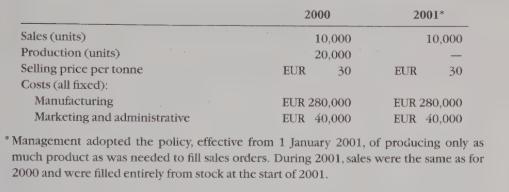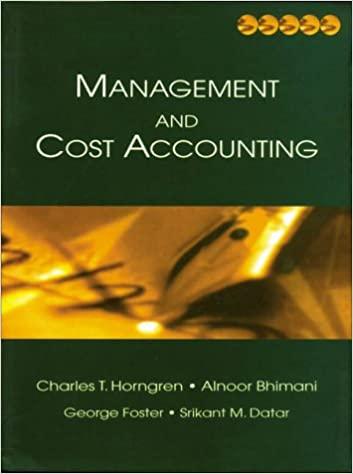Ginnungagap in 2001. (R. Marple, adapted) (40 minutes) It is the end of 2001. Ginnungagap, AS, began
Question:
Ginnungagap in 2001. (R. Marple, adapted) (40 minutes) It is the end of 2001. Ginnungagap, AS, began operations in January 2000. The company is so named because it has no variable costs. All its costs are fixed; they do not vary with output.
Ginnungagap is located on the bank of a river and has its own hydro- electric plant to supply power, light and heat. The company manufactures a synthetic fertiliser from air and river water and sells its product at a price that is not expected to change. It has a small staff of employees, all hired on a fixed annual salary. The output of the plant can be increased or decreased by adjusting a few dials on a control panel.
The following are data regarding the operations of Ginnungagap, AS: mju2

Management adopted the policy, effective from 1 January 2001, of producing only as much product as was needed to fill sales orders. During 2001, sales were the same as for 2000 and were filled entirely from stock at the start of 2001.
REQUIRED 1. Prepare income statements with one column for 2000, one column for 2001 and one column for the two years together, using
(a) variable costing and
(b) absorption costing.
2. What is the break-even point under
(a) variable costing and
(b) absorption costing?
3. What stock costs would be carried on the balance sheets at 31 December 2000 and 2001, under each method?
4. Assume that the performance of the top manager of the company is evaluated and rewarded largely on the basis of reported operating profit. Which costing method would the manager prefer? Why?
Step by Step Answer:

Management And Cost Accounting
ISBN: 9780130805478
1st Edition
Authors: Charles T. Horngren, Alnoor Bhimani, Srikant M. Datar, George Foster





